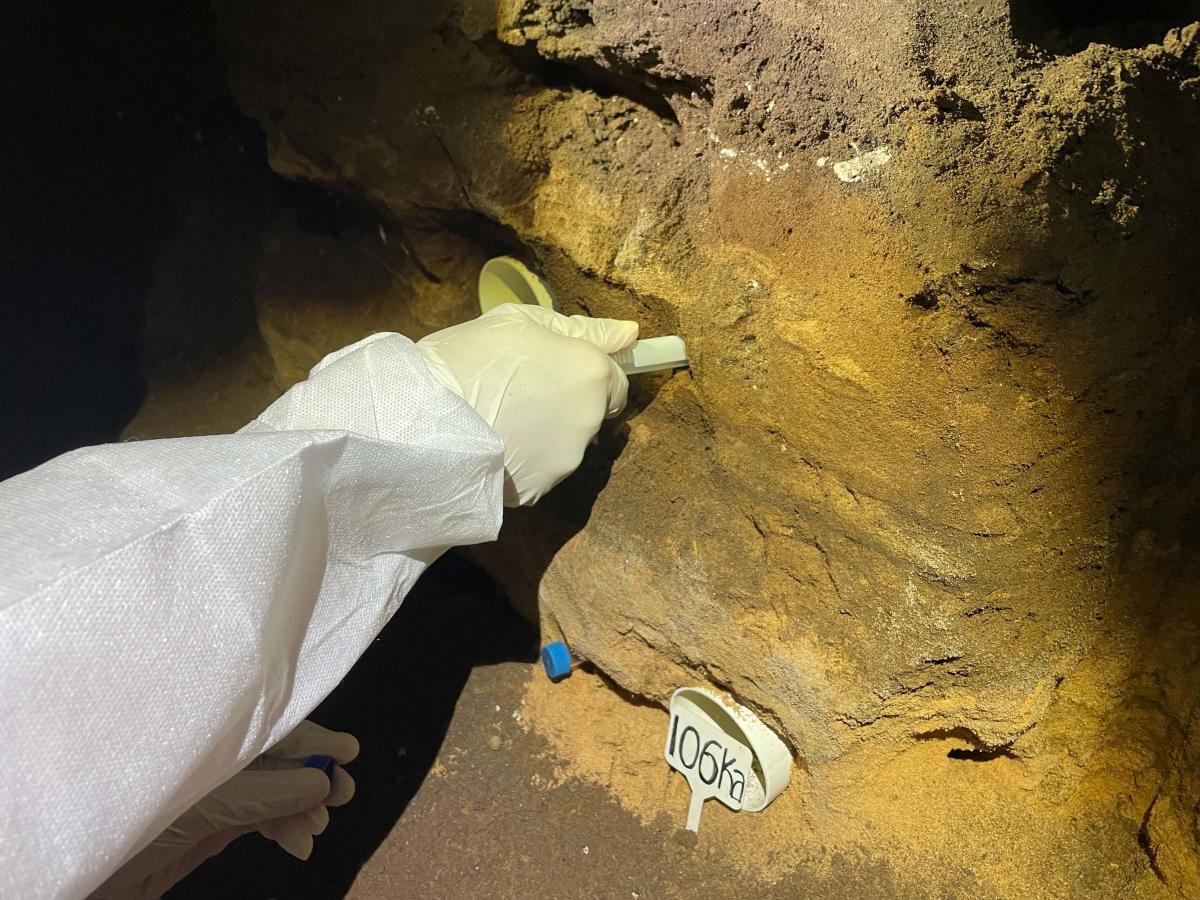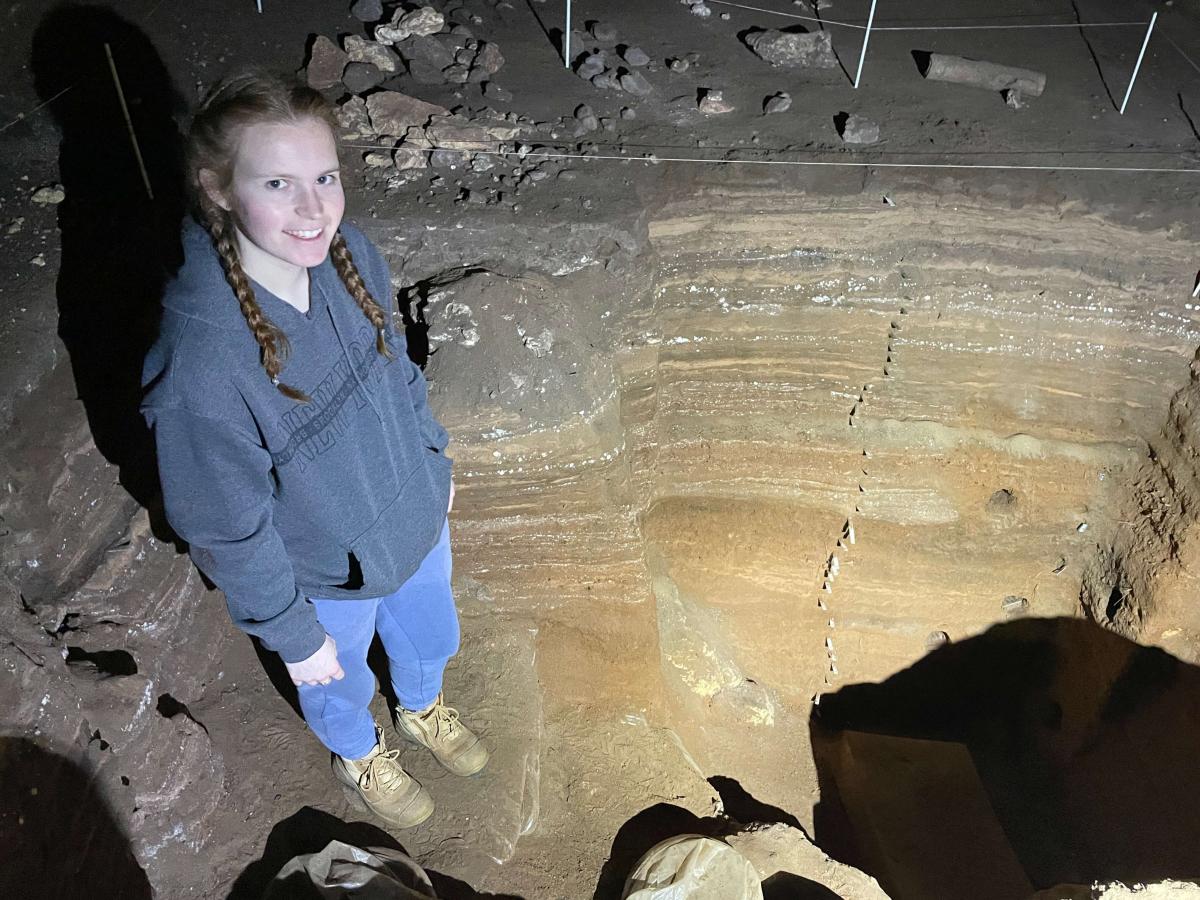A glimpse into the past: What digging for DNA in cave dirt tells us about ancient Australia?

Sediment layering at Blanche Cave, Naracoorte where DNA sampling was undertaken on each layer. Photo credit: Siobhan Evans.
For most people the term “ancient DNA” might conjur up images of Jurassic Park, where DNA extracted from a mosquito preserved in amber was used to re-create long extinct dinosaurs.
What many don’t realise is that physical remains of ancient animals aren’t the only source of their DNA. DNA shed millennia ago by microbes, plants and animals can also be found preserved in the environment, such as in sediments at the bottom of lakes, oceans, and in caves.
I am a PhD candidate at the University of Adelaide’s Australian Centre for Ancient DNA, where I use ancient DNA trapped in sediment (known as sedimentary ancient DNA) from caves and rock-shelters to learn more about the animals and plants that called these places home in the distant past. Such information can be used to trace changes in species distributions through time, and link these to changes in the climate or local environment.
The majority of studies using sedimentary ancient DNA have so far been restricted to cold environments such as polar regions and the higher latitude lakes and permafrosts of Europe and Asia. My research will expand the application of sedimentary ancient DNA in warm temperate climate zones.
To do this I will focus on caves from across south-eastern Australia, including caves near Wellington NSW, Naracoorte SA, Snowy River National Park Vic and the Florentine Valley Tas. This spread includes caves from a range of different climates and geological landscapes which is ideal for the experimental aspect of my study.

Ancient DNA sampling in protective gear to minimise contamination. Photo credit: Jamie Wood
There is still very little understanding on the factors influencing how long DNA can preserve in cave sediments. These factors include cave temperature, humidity, and which minerals make up the sediment. My research will address this knowledge gap by combining different metrics of DNA preservation (amount of DNA, fragment lengths and damage characteristics) with physical and chemical properties of the cave sediment and cave climate data. This will help in determining which factors promote the preservation of DNA for long periods of time and which are detrimental. I will also use the data to predict the temporal limit of DNA preservation within south-eastern Australia cave sediments.
As one of the first detailed assessments of sedimentary ancient DNA in Australian caves and rock-shelters my study will ultimately improve the local application of this exciting new tool and improve our knowledge and understanding of past biodiversity and environments. Such information is increasingly being used to help in conservation strategies for species in the future and climate modelling.

Siobhan Evans
Author: Siobhan Evans, School of Biological Sciences, Faculty of Science, Engineering and Technology.
Supervisors: Dr. Jamie Wood and Assoc. Prof. Bastien Llamas.
Funding support from the Australian Research Council Centre of Excellence for Australian Biodiversity and Heritage (CABAH) and Bioplatforms Australia.

Newsletter & social media
Join us for a sensational mix of news, events and research at the Environment Institute. Find out about new initiatives and share with your friends what's happening.
